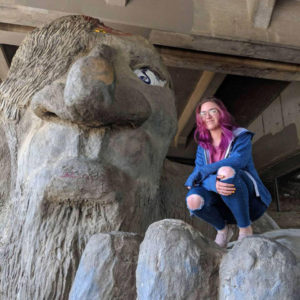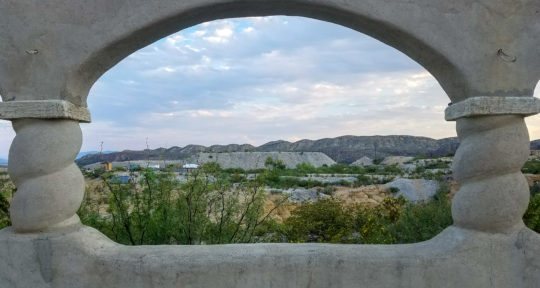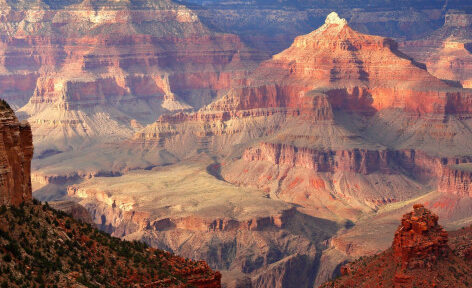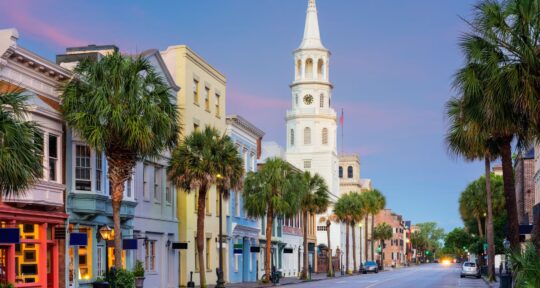Overcrowding at national parks is a hot topic these days, but it’s easy to forget that there are still hidden gems in the National Park System. The beauty of the National Park Foundation and National Park Service’s Find Your Park/Encuentra Tu Parque campaign is that it goes out of its way to be inclusive of all NPS sites, not just the big, popular national parks. So many parks and sites (there are more than 400, in fact) can provide an experience that’s virtually identical to exploring a national park, minus the crowds.
Enter the Ozark National Scenic Riverways.
The Ozark National Scenic Riverways (NSR) was created in 1964, four years before the Wild and Scenic Rivers Act of 1968. The riverways include the Current River and the Jacks Fork River, which feeds into the Current at the Two Rivers unit of the park. Since the Ozark NSR was made to preserve these waterways, its footprint is long and narrow, and though it looks like it’s far out of the way, it can be reached from St. Louis by car in three hours.
Rivers
My visit takes place on a Thursday in late spring. I’m looking forward to it but I’m not sure what to expect from a National Scenic Riverways, and am surprised that the visit will take all day. The drive from St. Louis passes by tons of kitschy Route 66 attractions, and while I’m tempted to take a detour to a few of them, I know I have to meet up with the rest of the group I will be going on a day-long ranger-led tour of the park with. Eventually, after about two hours, I turn down a winding, hilly, two-lane road and roll down my window. I carefully drive around the turtles that dot the pavement, and a wild turkey flies past my windshield.
I turn into the parking lot and join the group, which fills out as we start to put on some bug spray. It’s that time of year when it’s not hot enough to worry about sunburn, but it’s buggy enough out that I want to avoid mosquito bites.
The rivers of Ozark National Scenic Riverways provide a ton of biodiversity, which is evident in the surprising variety of plant and animal life for its 80,000 acres. In the park, visitors can find approximately 112 species of fish, 197 species of birds, 58 species of mammals (including feral horses, elk, and otters), 26 species of amphibians, and 46 species of reptiles. Additionally, about 1,000 different kinds of plants grow and thrive here.
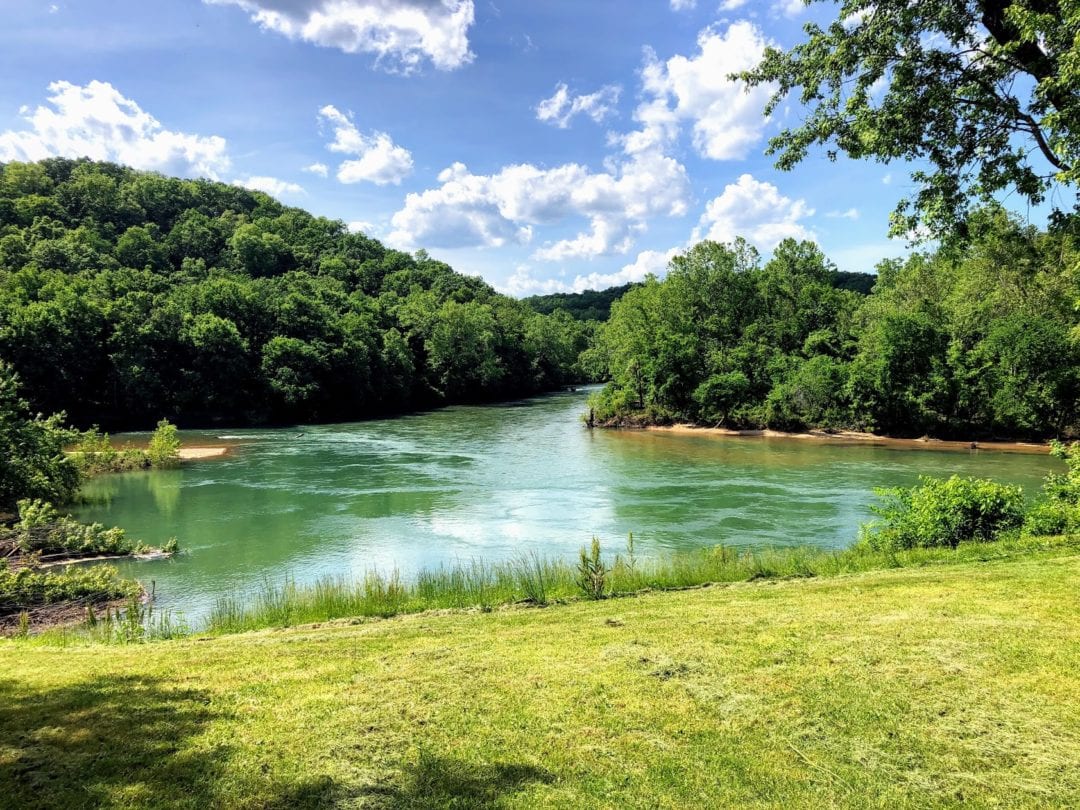
One particular creature Ranger Josh Chilton talks about during the tour is the endangered Ozark Hellbender, a kind of giant salamander. He describes it as being territorial, finding a rock it likes and settling in for life. It reminds me of the people here. Most of the rangers and volunteers I meet are locals who have grown up with what’s now the park as their backyard. When the rangers introduce themselves to our group and tell their stories, one even tears up as he talks about coming home to the Ozark NSR.
More obvious than the plant and animal life in the park is the excellent boating and fishing. For canoers and kayakers, the waters have some of the best year-round paddling, even in the winter. Since the rivers are spring fed, they don’t freeze over. Plus, for a large portion of the park, the waters are calm and shallow, so they’re great for jon boats (which were invented in the Ozarks just for waterways like these) or simply floating in a tube. While I would love to hop into an inner tube and crack open a can of beer, we don’t actually get on the water at all. There is plenty to see and do on the riverbanks.
Springs and waterfalls
Ozark NSR contains one of the United States’ largest concentrations of first magnitude springs. This is thanks to the soluble dolomite rock found throughout Missouri. For any geology geeks out there, this is primo karst topography.
The first stop on our tour through the park is Round Spring, which is a perfect example of the kind of natural springs that feed the rivers and shape the landscape. It’s 55 feet deep and perfectly round, and the usually crystal clear water feeds the Current River. It feels fitting to start off by seeing a spring, since they’ve helped lay the foundation for the park and play a role in just about every natural feature.
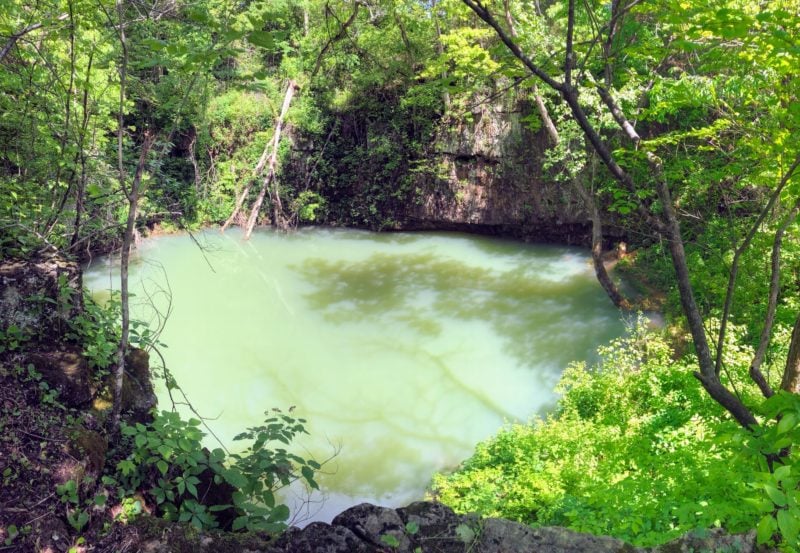
Further down the Current River is the largest spring of them all—Big Spring. The spring’s name is appropriate, as it’s one of the largest springs in the country, churning out a whopping average flow of 13,000 liters of water per second. That’s roughly 286 million gallons of water per day. It’s also the centerpiece of the beautiful Big Spring Historic District, much of which was built up by the Civilian Conservation Corps during the Great Depression.
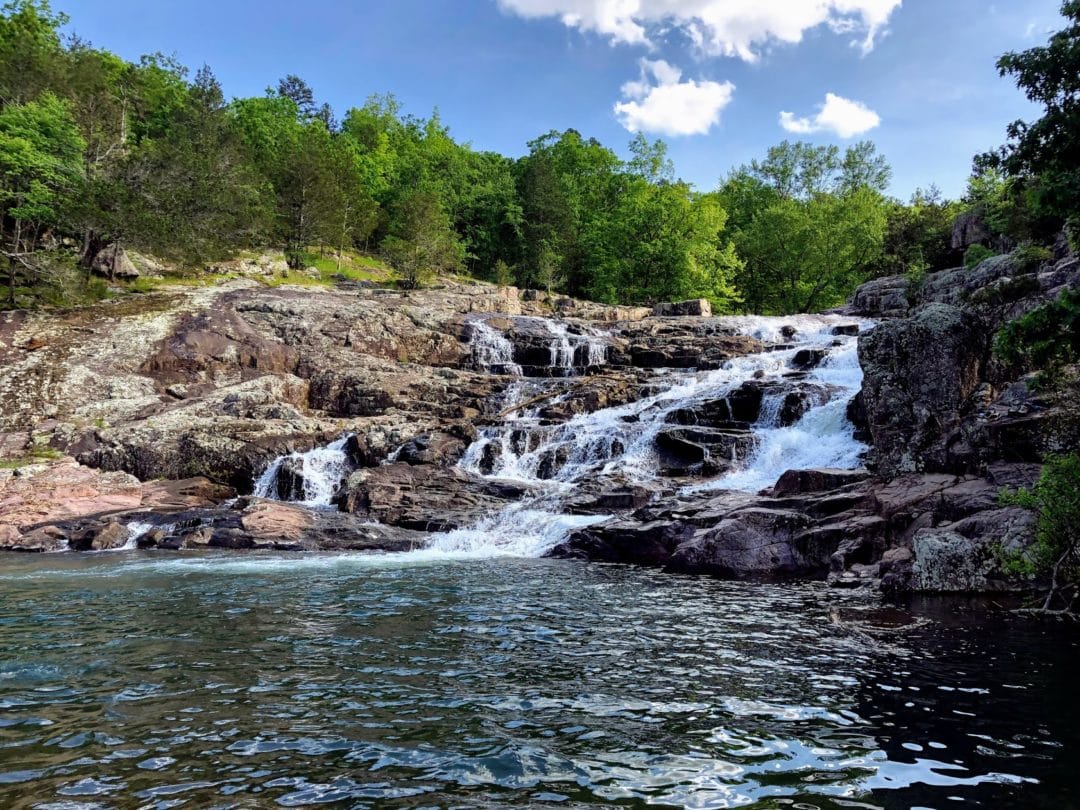
One of my favorite features from the whole trip is Rocky Falls. It’s actually a “shut-in,” a part of a stream with both soft dolomite and harder, igneous rhyolite. The stream eroded the dolomite, but not the rhyolite, so the water is “shut in” by the rhyolite, forming a waterfall. At the base of the falls, the stream widens again into a pool, which is perfect for swimming. The falls are a gentle, almost staircase-like cascade that can be climbed. Between scrambling up and down the waterfall and floating in an inner tube in the pool at its base, I fall in love with the idea of coming back. There’s something so nostalgic and alluring about the idea of a summer afternoon spent at a swimming hole.
Caves
Natural springs often mean caves. They’re formed when underground spring reservoirs and subterranean riverbeds carved into limestone or dolomite dry out as water tables drop. There are a few in the Ozark NSR, but the only one that’s open to visitors is Round Spring Cave. To see it, you have to snag a ticket on a ranger-led tour. Two tours are offered each day during the summer months, and each can only take 15 people. Tickets go on sale ($5 for adults, $2 for kids) a half hour before each tour starts; they’re cash only and reservations can’t be made in advance. However, it’s absolutely worth the effort.
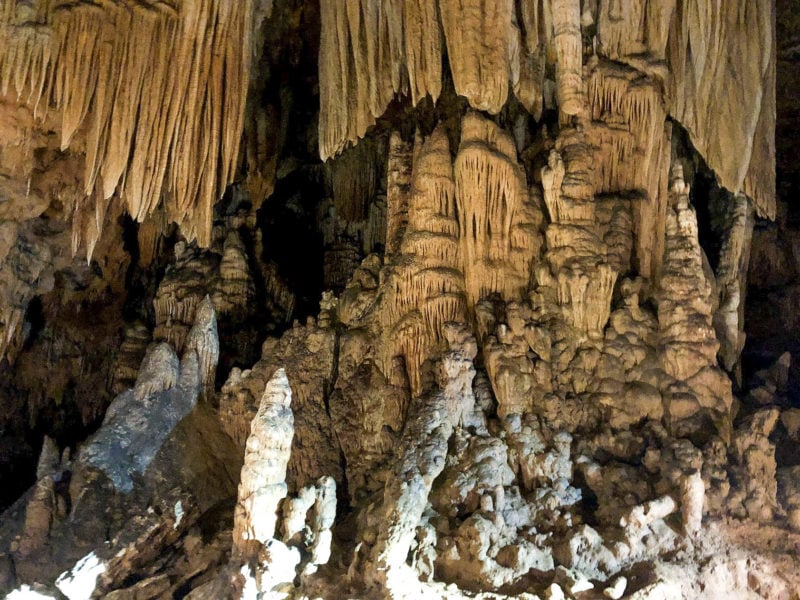
Round Spring Cave was discovered during the Civil War. It spent some time as a commercial tourist cave before it was made part of Round Spring State Park, which was then incorporated into the Ozark National Scenic Riverways. Luckily, despite its past as a show cave, it was kept mostly natural. There are still no lights in the cave, so each person is given an electric lantern. The only major change made to the cave is that a tunnel leading into the main chambers had to be created; before that, the entrance to the cave was a mere three feet high. The tunnel is still small enough that most people will need to duck and hunch through the passageways, but it makes entering the first big room all the more impressive.
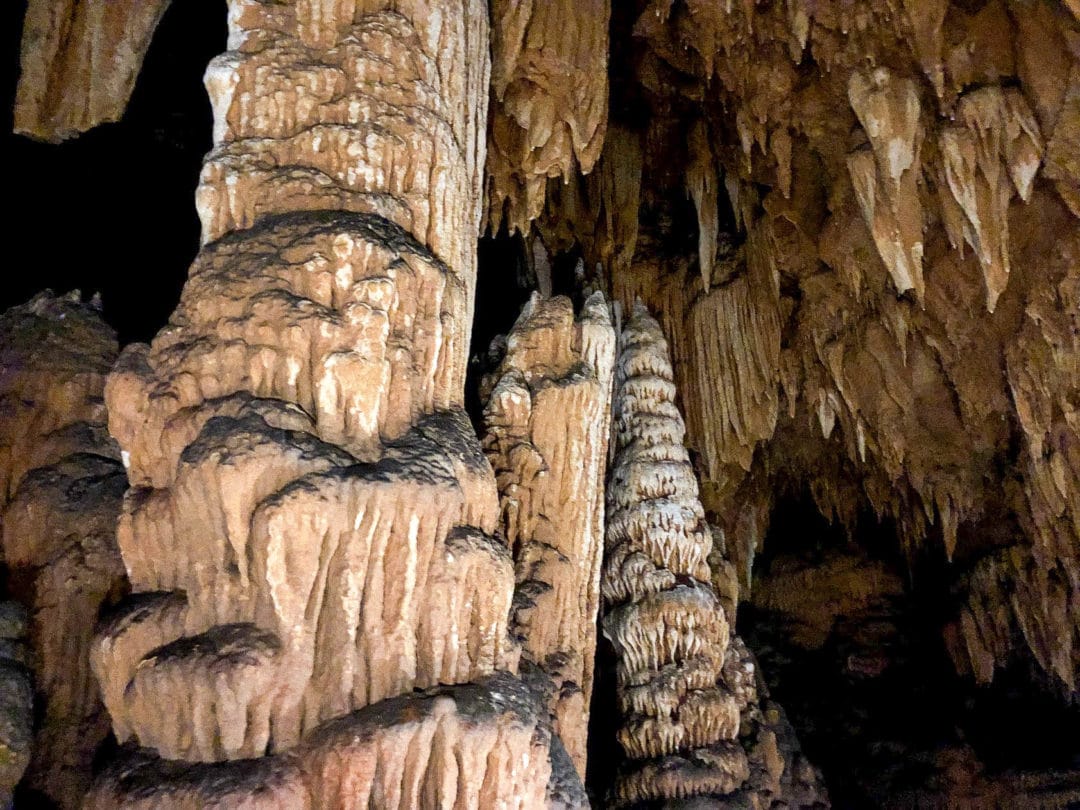
I’ve heard the phrase “living cave” before, but never understood it until I explore Round Spring Cave. All of the massive stalactites, stalagmites, straws, flowstones, and draperies were formed from tiny drops of water, shaping the speleothems by depositing minerals and eroding rock.
The ranger leading the tour shows us a column that has dried up from humans simply touching it; oils on our hands can prevent mineral buildup necessary for a formation to grow. There’s a passageway in the cave that is closed to the tours; rangers use this part of the cave as comparison to ensure that the rooms open to visitors aren’t being seriously affected by human interference.
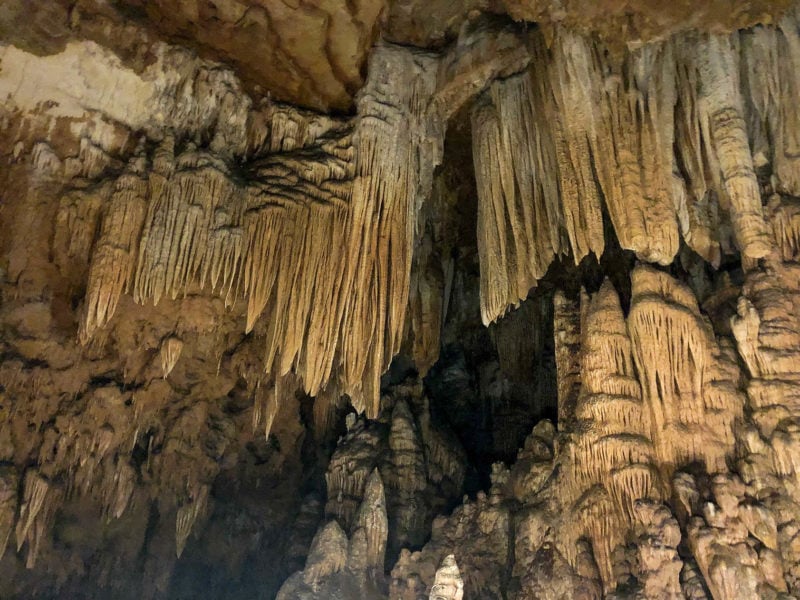
The cave formations are absolutely awe-inspiring, with each room we explore more ornately decorated by Mother Nature than the last. It’s hard to imagine that individual drops of water created all of the huge and strange and beautiful stone pillars and waves. What I’m not expecting to see are mounds of ancient bat guano. We all know that bats love caves, and their poop really piles up—but it’s a good thing. It can be used as fertilizer, and was once used to make gunpowder. These days, rangers study it to learn about the bats that once occupied the cave.
Historic sites
Big Spring, Round Spring, and Alley Spring (which we’ll talk about in a minute) used to be individual state parks. They were eventually added to the National Scenic Riverways, but there are a few state parks that remain, butting up against the NSR. We visit one called Echo Bluff. It’s on the site of an old summer camp along Sinking Creek, which feeds into the Current River. We eat lunch in the beautiful Betty Lea Lodge, which is surrounded by swanky, brand-new rental cabins. The view overlooking Sinking Creek from the lodge’s massive patio is particularly incredible. The creek is framed by the lush, green bluff behind it and a rocky beach in front.
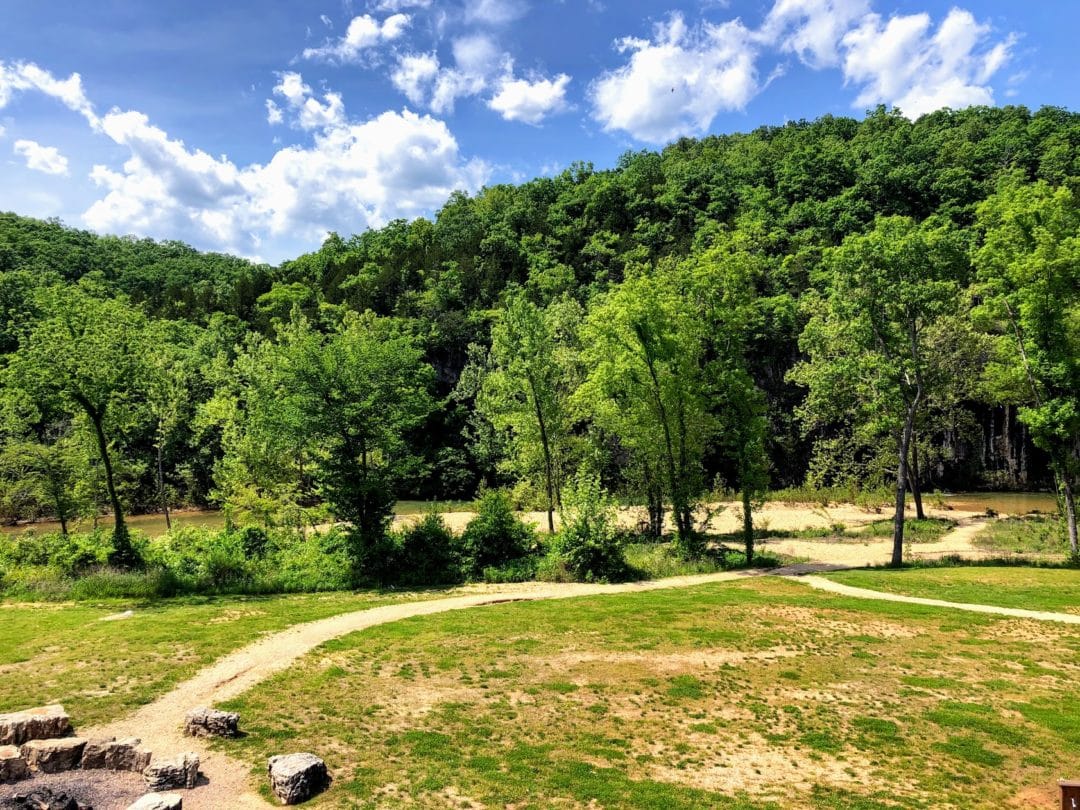
The last stop on the Ozark National Scenic Riverways adventure is Alley Mill, a historic roller mill located on beautiful Alley Spring. The Alley Mill, with its signature red paint job, is one of those places that’s strikingly beautiful, but also feels familiar. It’s wildly popular with artists and photographers, and was even selected as one of the scenes depicted on recent America the Beautiful quarters, which highlight spots from national parks and sites.
Ranger Chilton describes meeting a couple who traveled all the way from Asia to see the mill, since a picture of it hung in a restaurant the couple frequented when they started dating.
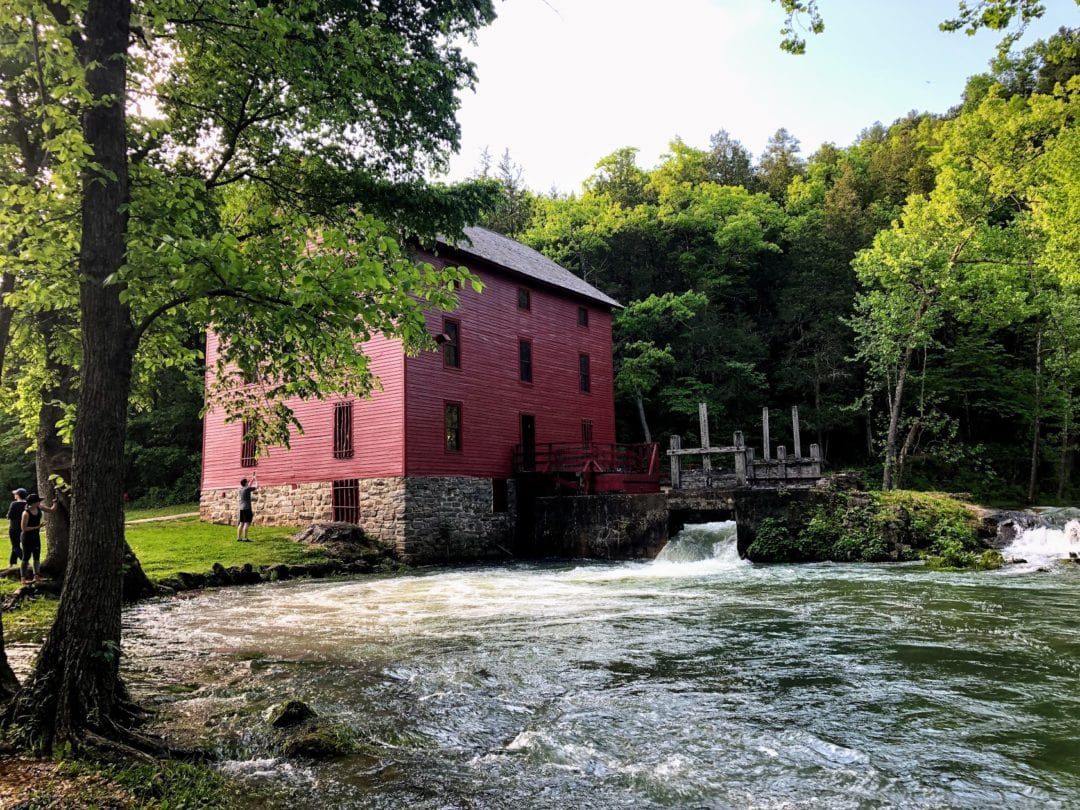
The mill was finished in 1894, built by George Washington McCaskill to operate as a merchant mill; local farmers could bring the wheat or corn they grew and pay to have it ground into flour. The spring water provided free power for the mill, but frequent floods were a problem.
In 1902, John Knotts purchased the 80-acre site and turned it into more of a community hub, adding a blacksmith shop, a general store, and other businesses. The mill is the only original building still standing, but the site is also home to a historic one-room schoolhouse that was moved here for preservation more recently.
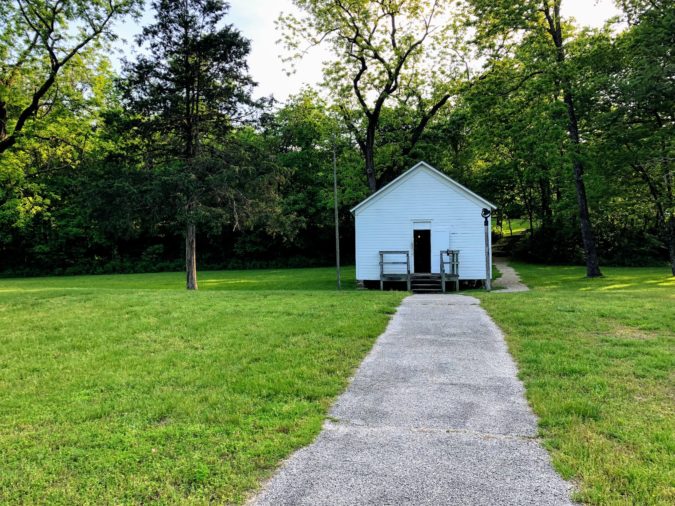
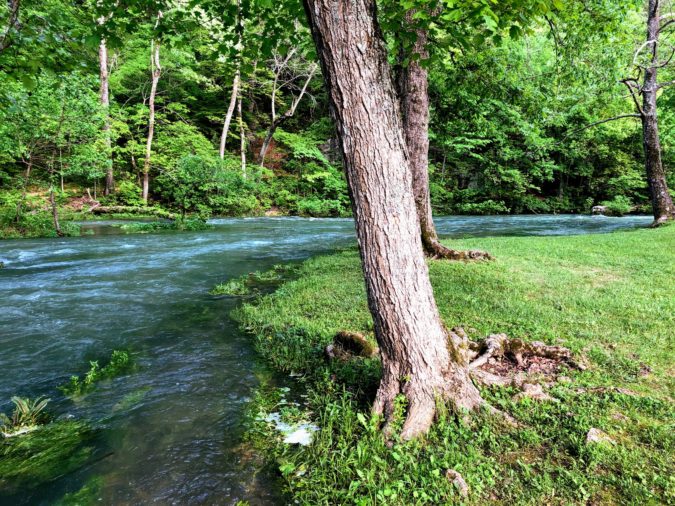
Between the schoolhouse and the mill, Alley Spring is the historical and cultural gem of the park. It hosts an annual Independence Day celebration and the ever-popular “Haunting in the Hills” event in mid-October, which preserves folklore, legends, superstitions, and mysteries from the Ozarks through reenactments and storytelling.
You don’t have to wait until autumn to get your fix of lore, though. There are whisperings that Alley Mill is haunted. Or, if you’re brave enough, you can go in search of the Ozark Howler, a Bigfoot-type cryptid that allegedly stalks the hills.
The ultimate hidden gem
To me, the whole trip to the Ozark National Scenic Riverways is a surprise. It’s striking how similar it is to visiting one of the more famous national parks. I would have never have guessed that there was so much to see and do. It is also incredible seeing how passionate the rangers are about the park. And despite society’s renewed interest in the outdoors, it is still quiet and uncrowded.
I leave the park feeling like I have been shown a detailed map to a buried treasure. Ozark NSR is quite possibly the NPS’s ultimate hidden gem, and I suggest visiting as soon as possible, before it’s discovered by the rest of the country.
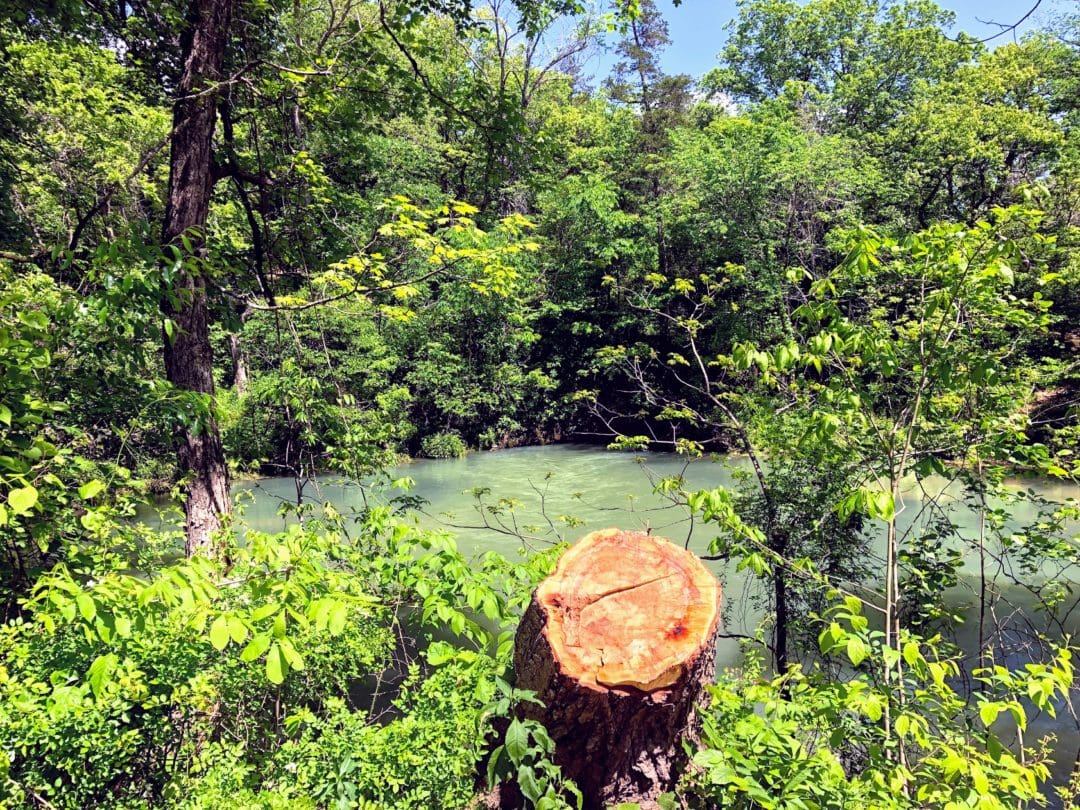
If you go
The Ozark National Scenic Riverways is free to visit and open year-round. Visitor centers and guided tours are offered Memorial Day through Labor Day, but make sure to check the hours before visiting. Camping is available at several campgrounds in the park, and there are additional campgrounds in the surrounding towns. The Ozark NSR’s website also offers a handy list of Riverways outfitters, should you want to rent a canoe or take a guided paddle.
